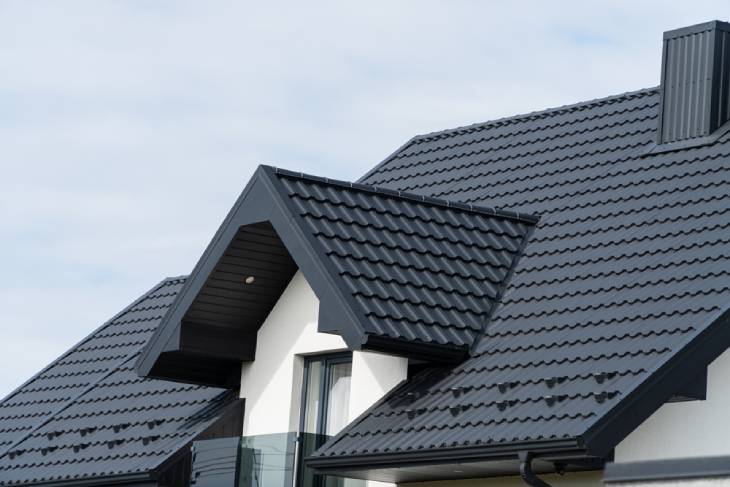
Have you noticed signs that your roof might be leaking? Sometimes, by the time you see water coming through or spot missing shingles and stains on your ceiling, the leak has been there for a while. This can expose your home to considerable water damage. If you don’t address it, it can cause property damage, threaten your safety, and cost a small fortune in roof repairs.
It’s common to think of a leaky roof or leakage in the roof vents as an isolated problem. However, letting water drip constantly into your home can result in multiple issues.
Rot in Your Home’s Framing
When water keeps seeping through your roof, sooner or later it will sneak into the very skeleton of your home. This constant exposure to moisture will start to break down the wood and make your home less sturdy over time,
The wood inside your house usually is not as heavily protected against moisture as the wood outside. When wood gets wet due to a leaking roof, rot is not far behind. If you are spotting water drips or stains on your ceiling, it’s likely the leak has reached your home’s framing, which could:
- Weaken the support posts and beams
- Damage the roof’s structure
- Rot the ceiling supports
- Cause the roof decking to fall in
Mold Growth
When roof leakage occurs, the moisture it creates sets the perfect breeding ground for mold. And once mold appears, it can spread quickly across different surfaces. Mold in your living spaces can impact your health in countless ways:
- Allergic reactions (sneezing, runny nose, red eyes, and skin rash/dermatitis)
- Asthma flare-ups (increased frequency and severity of symptoms, including wheezing, shortness of breath, chest tightness, and coughing)
- Irritation of the eyes, nose, throat, and lungs
- Respiratory infections (chronic lung illnesses or chronic obstructive pulmonary disorder)
- Sinusitis (symptoms include congestion, headaches, facial pain/pressure, and reduced sense of smell)
- Hypersensitivity pneumonitis (inflammation of the lungs)
- Neurological symptoms (headaches, memory loss, mood swings, and changes in attention span)
- Fatigue and discomfort
Cleaning mold off your surfaces—be it walls, floors, or ceilings—requires more than just elbow grease. Sure, you might reach for vinegar or bleach for a DIY cleanup, but without addressing the root cause, mold is likely to make a comeback.
Compromised Attic and Insulation
The attic is almost always the first victim of roof leak damage. When water finds its way into your attic, it can also result in damaged insulation due to water intrusion. Insulation, especially the kind that keeps your home warm, does not do well with moisture; it can clump together. Since insulation is supposed to help manage your home’s temperature, this is problematic.
Although many attics use water-resistant fiberglass insulation, it’s not completely immune to water damage. Wet fiberglass insulation doesn’t keep your home as warm or cool as it should. This makes for a less comfortable living environment and a harder-working HVAC system. Water damage in the attic can also damage your ceiling light fixtures.
Drywall Damage
Roofs can leak for some reasons—missing shingles, damaged flashing, or blocked gutters causing water to pool. Once water breaches the outer defenses of your roof, it starts its downward journey, following the path of least resistance.
Drywall, made from gypsum encased in paper, is like a sponge when it comes to water. It readily absorbs moisture. The moment water from a leaky roof makes contact with drywall, the paper begins to soak it up, and the moisture seeps into the gypsum core. As a result, they start to swell. This swelling is not uniform, which can cause the drywall to warp or bulge.
Over time, prolonged exposure to moisture from roof leaks causes structural damage in the drywall. The waterlogged gypsum loses its firmness and creates soft patches that eventually turn into holes if the water leaks are not addressed. Changes in the color of your drywall or the appearance of mold are signs that the leak in your roof might be spreading and worsening.
Electrical System Risks
Since water can flow along beams, pipes, and wires, it may find its way into your home’s electrical system. This could be through light fixtures, switches, electrical wiring within walls, or your electrical panel. Once water comes into contact with your electrical system, it starts to corrode metal components like wires, connections, and circuit breakers.
Corrosion can result in poor connections and eventually cause the electrical components to fail. Corroded wires and parts are less efficient and can overheat, thereby posing a fire risk. Even a small amount of water can cause a big fire if it bridges the gap between two wires that are not meant to touch.
Your home’s electrical system is designed to protect you from the dangers of electrical fires. One of the biggest dangers of a leaky roof is circuit breakers that keep tripping. They are doing their job, cutting off electricity when they detect a fault like a short circuit. However, if your breakers are tripping frequently, it could be a sign that water is getting into the electrical system and causing issues. Other signs include lights that flicker, switches that don’t work, or outlets that stop charging your devices.

Rely On the Trusted GotRot Team to Fix Your Leaky Roof
At GotRot, we understand how serious roof problems can be for homeowners. That is why we offer comprehensive roofing services designed for your needs. We start with a careful evaluation of your roof. We don’t perform superficial roof repair—we look for the root cause of roof leaking to make sure your investment lasts as long as possible. Whether you are looking for a small roof leak repair or thinking about a whole new roof, we’ve got you covered. Call us at 206-312-5168 or contact us online to schedule a roof assessment and get started with professional roof restoration to protect your property.